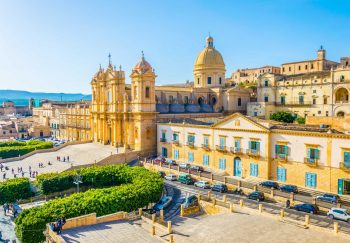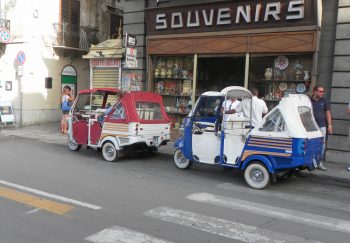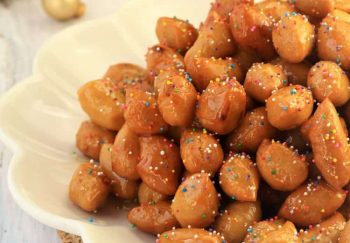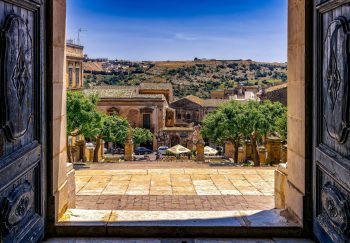The famous Sicilian bakery art is at its best during special occasions. At Easter, which coincides with Springtime, every window or banquet table becomes a celebration of sweet delights!
The tradition of baking Easter cakes in Sicily is rooted in centuries of creativity and imagination by the nuns. Traditions that have been passed down over the centuries are still being practiced today.
The Easter Lamb is the most common Easter sweet in Favara. It’s a marzipan-pistachios paste dessert that is covered in the “velata”, a sugar glaze, and richly decorated with small bells and silver sugar pearls as well as ribbons and small red flags.
This dessert is a reminder of Jesus’ idea of Him as Lamb of God. It dates back to the early 20th century when it was made by nuns from the Collegio di Maria in Favara’s district “Batia”. This delicious dessert is on display at Chiaramonte Castle, where you can also see it being prepared.
The Picureddi (little sheeps) are marzipan sweets that have been shaped like sheeps and laid on their sides on a “green grass” with sprinkles.
Erice, in Trapani, is where the Ericini were made. They are still being made in the Convent of San Carlo today. These sweet marzipan treats are decorated with fine detail and filled with cedar jam.
You can find the Cassatelle at Agira if you visit Agira during Eastertime. They are not related to the cassata with Ricotta cheese. These are delicious pastries that have a thin crust and are filled with cocoa, cinnamon, and toasted almonds.
A popular Easter cake in Sicily is the Cassatella (fresh pecorino) with ricotta or toma. This is a bread stuffed with ricotta and small pieces of chocolate, as well as candied fruits. You can also use ricotta to stuff the bread with tuma, which is a fresh, unsalted pecorino, and melted with sugar. You can top it with cocoa powder or vanilla icing sugar.
Lenten cookies are a Sicilian tradition. They were originally a votive dish that was associated with Lent. These biscuits were a great remedy for Lenten fasting days as required by the Catholic faith. They can be found all across Sicily, from Enna and Siracusa to Catania and Palermo. However, their common feature is the inclusion of almonds.
It is called u Pupu Ccu l’ovu, which means “puppet and egg”. However, depending on where it was born, it may be called “campanaru” (or “cannatuni”) in Trapani or Palermo, or “pupu” in Palermo.
It’s a traditional Easter biscuit that comes in many shapes, such as little baskets, ponies and hearts. This was once the gift of love or family before the advent of modern Easter Eggs.
Tradition says u pu is a home-cooked cookie. It is decorated with hardboiled eggs in their shells, strips of dough and colored sprinkles. To remember the date of spring’s birth, the cuddure needed an odd number of hardboiled eggs. Usually twenty-one.
The famous Cassata Siciliana is the last of the Sicilian sweets. It is the Queen of Sicilian Sweets.
You will also find desserts from the ancient Sicilian tradition.
Siciliy. Food and wine



